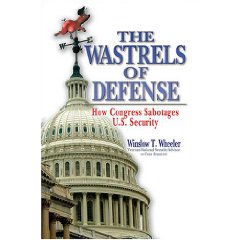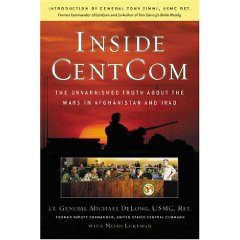The Trial of Henry Kissinger
Secrets: A Memoir of Vietnam and the Pentagon Papers
On the Psychology of Military Incompetence
Pathology Of Power
There are other books on this issue of “cooking the books” and the strategic consequences of falsifying or prostituting intelligence, but this book by a first-time author, C. Michael Hiam, jumps to the head of the line. This is one of the most exciting and absorbing books on intelligence it has ever been my privilege to read. It is not a substitute for Sam Adams' own book, War of Numbers: An Intelligence Memoir nor for George Allen's None So Blind: A Personal Account of the Intelligence Failure in Vietnam or Bruce Jones' War Without Windows or Jim Wirtz The Tet Offensive: Intelligence Failure in War (Stemme) or even Orin de Forest's book Slow Burn: The Rise and Bitter Fall of American Intelligence in Vietnam.
I am especially moved by this book because it treats Sam Adams, who was reviled as often as he was a hero, in a gentle fashion, and makes it clear that the bottom line was that Adams was right and Adams had integrity. The book is superb at explaining why General Westmoreland had to back down when he threatened CBS with libel because too many witnesses were prepared to say that it was Westmoreland who ordered that the number of “enemy combatants” never go above 300,000. The military officers who loyally but stupidly followed that order, and the CIA bureaucrats who unethically “folded” on this important issue of “who are we fighting and how many” are tarred and feathered by this book, and right so, as it applies to the run up to war in Iraq and the planned bombing of Iran.
There are other CIA heroes in this book, notably Ed Hauch who got it right on the first day–he and others who actually knew Ho Chi Minh knew him to be a nationalist and knew we could not win, but it would take us 10 years to figure that out. Same same Iraq only we did not have any CIA people with both the knowledge and the integrity to speak out, just George “slam dunk” Tenet, the world's greatest intelligence prostitute.
As we consider tactical nuclear weapons for Iran, it is instructive to read in this book that the military planned for nuclear missile batteries to be inserted into Da Nang and Nha Trang.
As we reflect on how the Army Chief of Staff was ignored when he spoke of the need for major land forces to stabilize Iraq, only to be ignored, it is instructive to read in this book that Walt Rostow and others knew full well the standard rule of thumb for insurgencies, the need for a 27:1 ratio.
McNamara was deceived by Westmoreland–fast forward to Iraq and we have on the one hand a prostitution of intelligence, and on the other a series of truthful wise Army generals whose advice was ignored by civilians.
The author has done a really first rate job of capturing the nuances of the CIA and the military. His discussion of the hours spent on chit-chat unrelated to work reminds me of the AIM system today, where CIA has discussion groups on everything from teen-age drivers to menopause–in my experience, most CIA headquarters people are actually working only half the time.
The author will be long admired for this book, and on page 122 he delivers the coup de grace in citing Sherman Kent, speaking to Sam Adams, and asking “Have we gone beyond the bounds of reasonable dishonesty?” What an incredibly good job the author has done with this book.
I have been energized by this book, which validates my long-standing fight to induce intelligence reform. I was called a lunatic in 1992 when General Al Gray and I gave up on four years of internal appeals and publicly brought up the need for emphasis on open source intelligence. 18 years later we finally have a few well-meaning but impotent individuals without a program, without money, without staff, and without a clue. We will march on, and the intelligence reform will be imposed now rather than induced. I anticipate legislation on an independent Open Source Agency soon–unlike secret intelligence, public intelligence cannot be manipulated nor ignored.
The book gave me new insights on Sam Adams and on the entire order of battle methodology. Those trying to understand the Global War on Terror and the issues of foreign fighters versus home guard insurgents would do well to read this superb volume.
The author points out that Tet was a huge military failure, one that could have been exploited by the US military had they not been so deficient in intelligence about small units and the guerrillas (immortal paraphrase: “here we are in a guerrilla war and no one is counting the guerrillas”). The author educated me on the work that Sam Adams did on the Khemer Rouge in Cambodia, and saddened me when he discussed how Sam Adams' next project was going to be Chinese strategy–now wouldn't that have been something?
For the Information Operations folks, the book briefly but ably covers the Viet Cong “Military Prothlesizing” corps that was responsible for POW conversions into agents, for running psychological operations against the Saigon regime, and for penetrating the South Vietnamese Army and government, with a success rate of 30,000 or 5%. When combined with what Jim Bamford tells us on Body of Secrets: Anatomy of the Ultra-Secret National Security Agency about North Vietnamese Signals Intelligence, we can only marvel as the manner in which they beat our ass in the intelligence war, in part because of our lack of ethics in both the military and at the highest levels of the CIA.
Viet-Nam unraveled the Johnson presidency; I fully expect Iraq and Iran to unravel the Bush presidency. This book could not have emerged at a better time, and I recommend it very strongly to all intelligence, military, and policy professionals.









